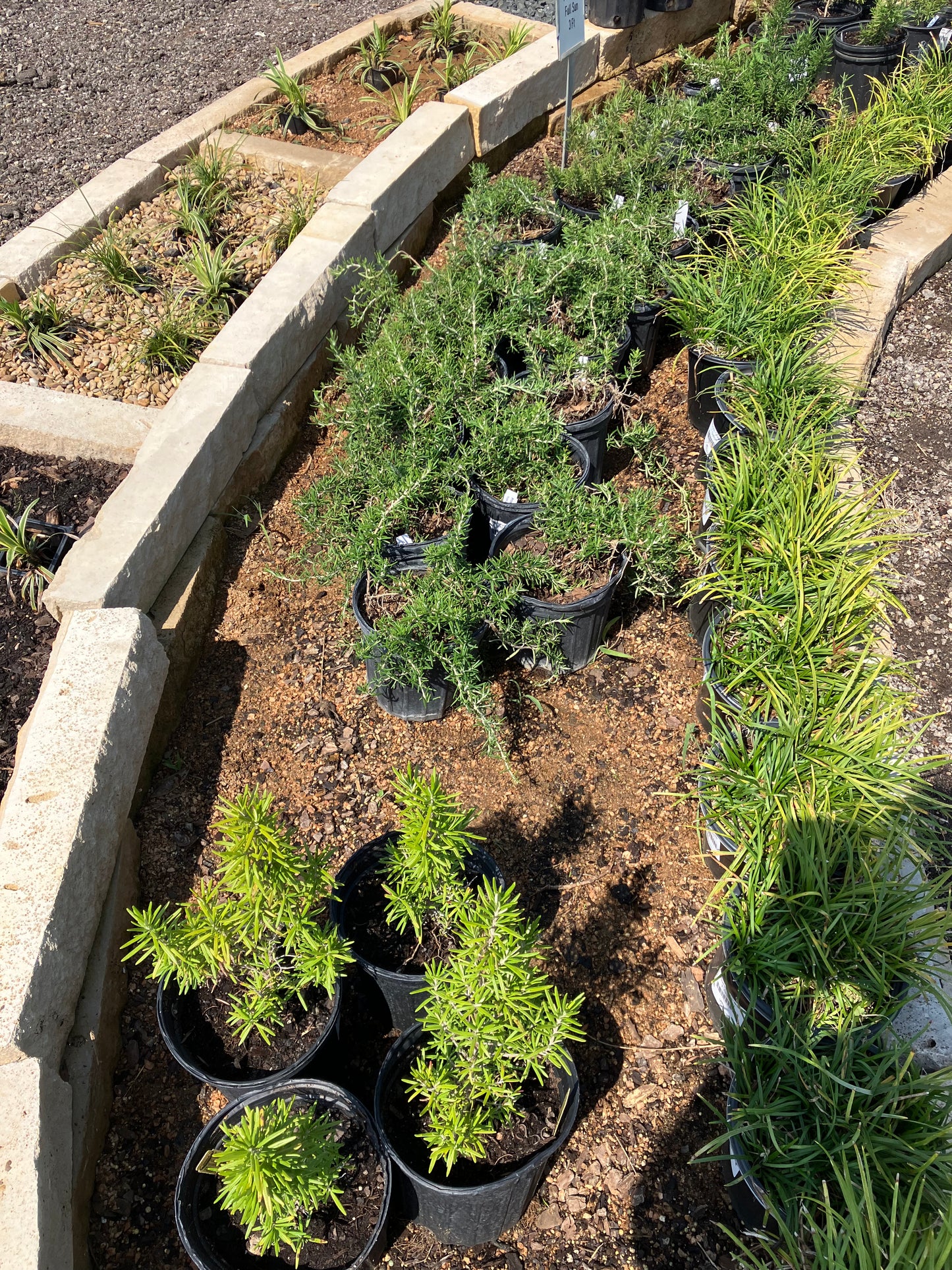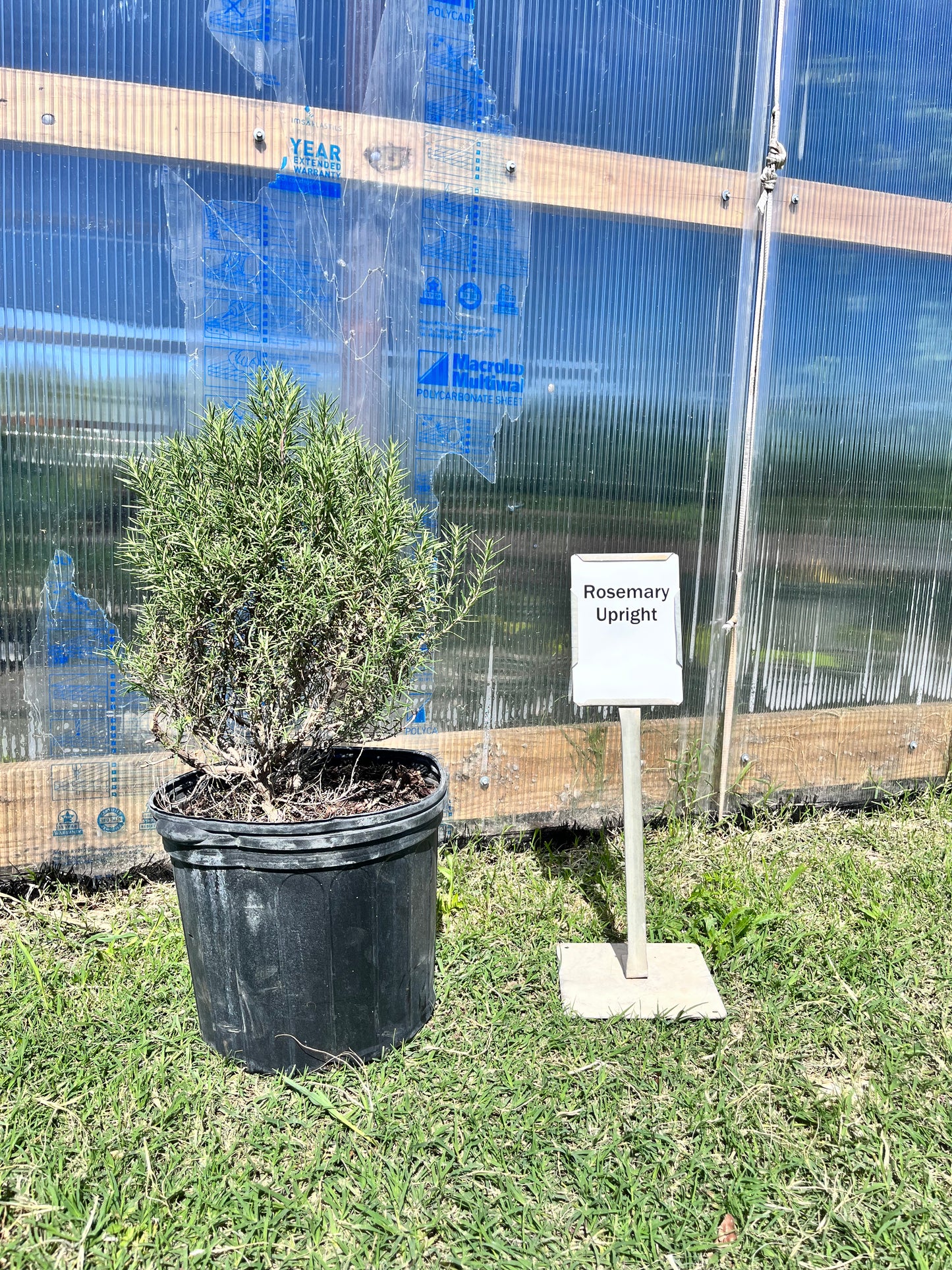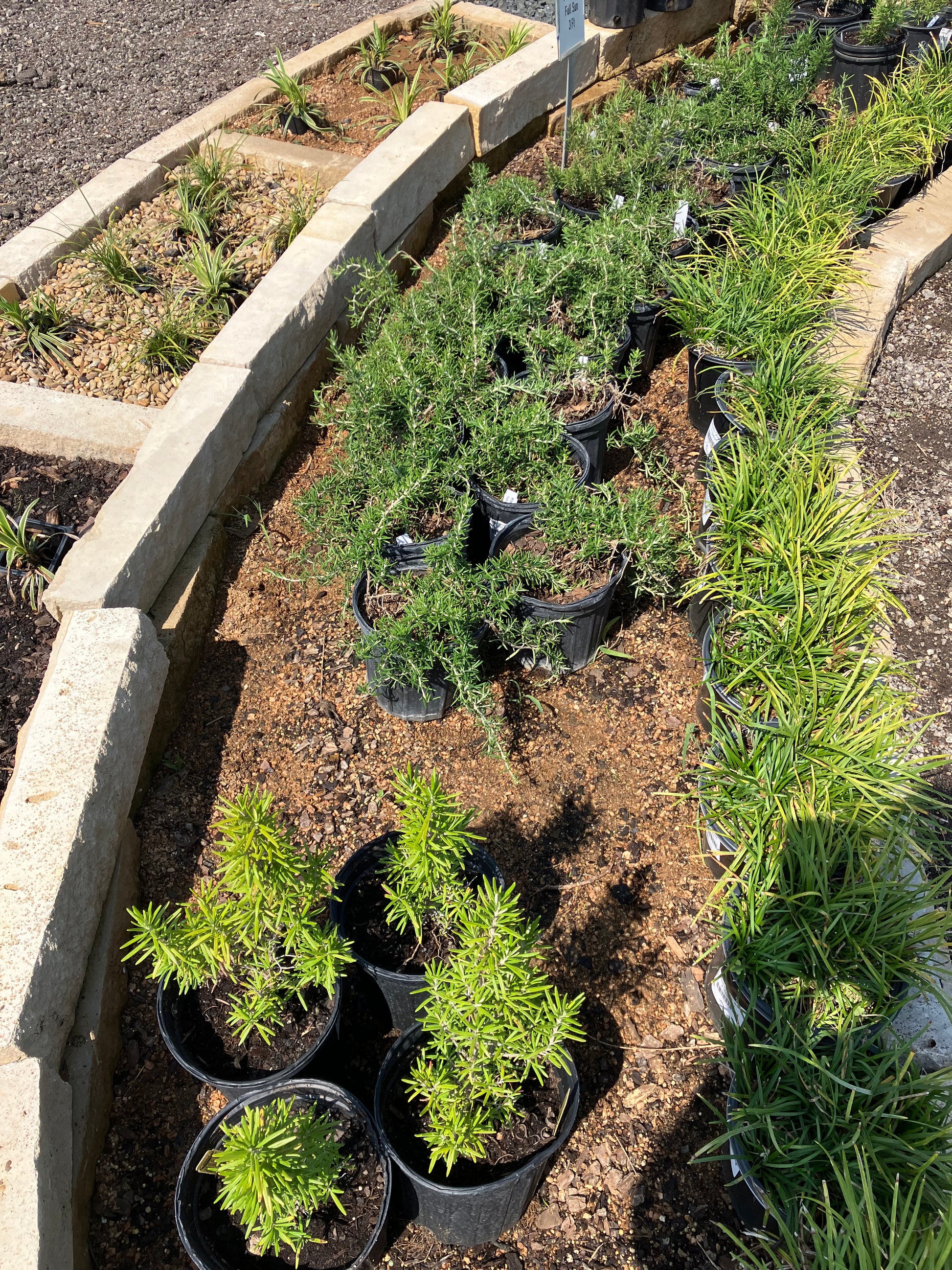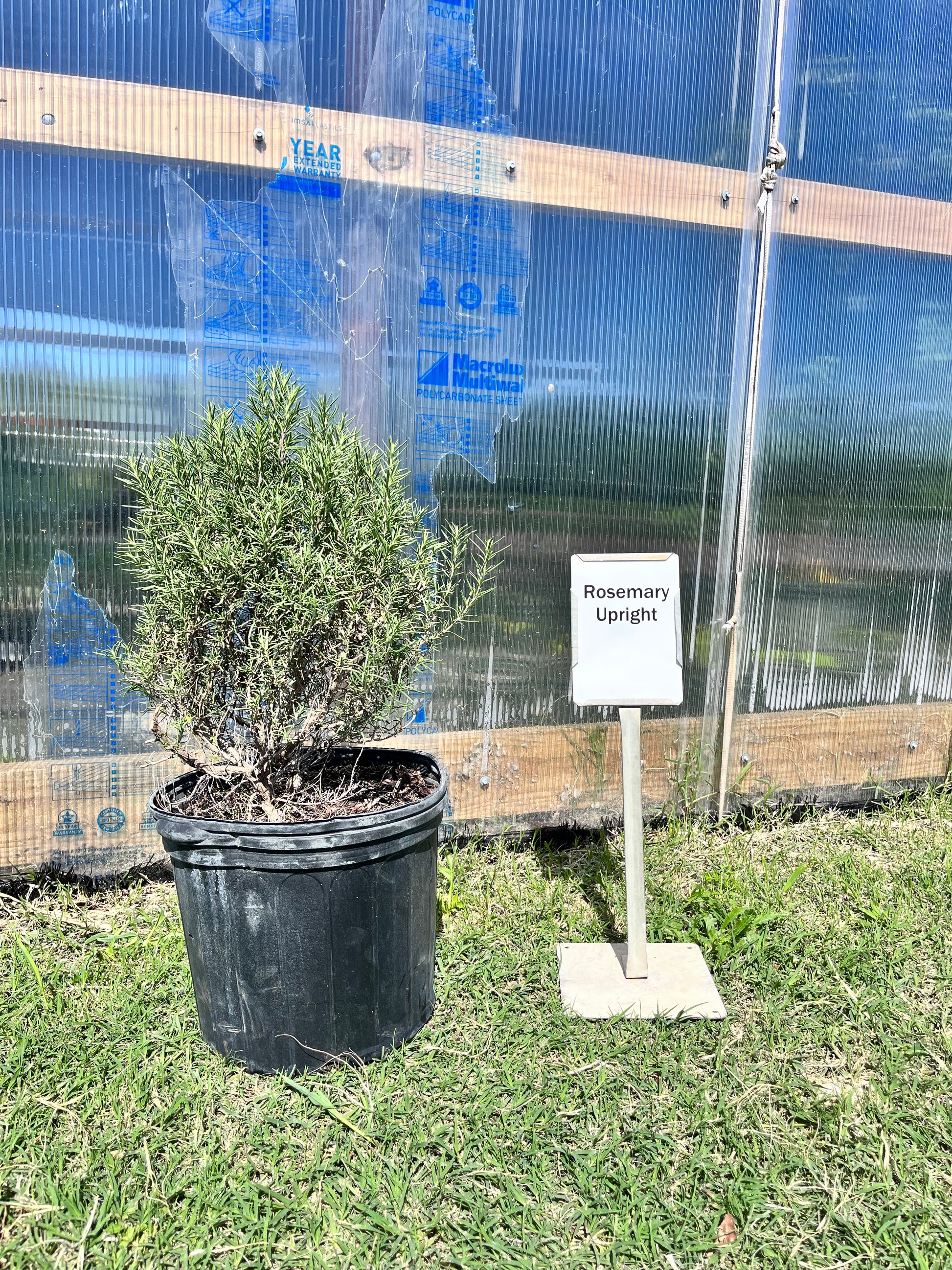Rosemary Upright
Rosemary Upright
Description: Upright Rosemary is a woody perennial shrub with narrow, needle-like leaves that are dark green on top and silvery-white underneath. The leaves are highly aromatic and have a distinct pine-like fragrance when crushed. In addition to its culinary uses, Rosemary is often grown as an ornamental plant in gardens and landscapes due to its attractive foliage and drought tolerance. Upright Rosemary may produce small, pale blue flowers in spring or summer, adding to its ornamental value.
Size: Upright Rosemary typically grows to a height of 3 to 5 feet (0.9 to 1.5 meters) and spreads of 2 to 4 feet (0.6 to 1.2 meters) at maturity. However, individual plants may vary in size depending on growing conditions, pruning, and cultivar. The shrub has an upright growth habit with dense, branching stems. It can be pruned to maintain a more compact size or encouraged to grow taller for use as a hedge or specimen plant.
Best Growing Zones: Upright Rosemary is native to the Mediterranean region and is well-suited to warm, sunny climates. It is commonly grown in USDA hardiness zones 8 to 11, where winters are mild and frost is rare. In cooler climates, Rosemary can be grown as an annual or overwintered indoors in containers. While Upright Rosemary is relatively tolerant of heat and drought, it may struggle in regions with high humidity or poorly drained soil.
Soil and Sun Requirements: Upright Rosemary thrives in well-drained soil with good fertility and adequate moisture retention. It prefers slightly alkaline soil but can tolerate a range of soil types, including sandy, loamy, or rocky soils. Rosemary is highly drought tolerant once established and prefers dry conditions over consistently wet or waterlogged soil. It requires full sun exposure, receiving at least 6 to 8 hours of direct sunlight per day to thrive.
Maintenance: Upright Rosemary is low-maintenance once established and requires minimal care to thrive. Water newly planted Rosemary regularly until established, then reduce watering to once or twice per week, depending on weather conditions. Prune Rosemary as needed to maintain its shape, remove dead or woody growth, and encourage bushier growth. Harvest Rosemary leaves as needed for culinary use, taking care not to remove more than one-third of the plant at a time.






